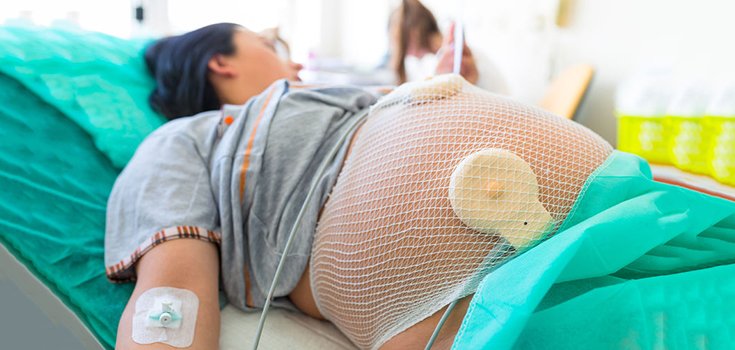2 Simple Things Can Cut a Woman’s Risk of Needing a C-Section

A study in the British Medical Journal (BMJ) suggests that a pregnant woman can reduce her risk of needing a caesarean section, or C-section, by around 10% by doing 2 simple things: eating healthy and staying active. Not terribly surprising, is it?
In 2015, 32% of all deliveries in the United States were C-sections. These procedures may entail less pain, but they are by far riskier than natural childbirth, for both mom and baby. The surgery puts women at risk for:
- Infection.
- Heavy blood loss.
- A blood clot in the legs or lungs.
- Nausea, vomiting, severe headache after delivery (caused by anesthesia and having an abdominal procedure).
- Constipation or, worse yet, the bowels stop working completely – a condition called ileus.
- Injury to the bladder and other organs during surgery.
- Maternal death (around 2 in 100,000 caesarean births).
Some long-term complications can also occur, such as:
- Rupturing the uterus during a future pregnancy or vaginal birth.
- The growth of the placenta low in the uterus, blocking the cervix (Placenta previa).
- The placenta grows deeper into the uterine wall than usual, causing severe bleeding after childbirth and sometimes requiring a hysterectomy.
What’s more, babies delivered via caesarean section face certain risks of their own, including:
- Injury during the delivery.
- Need to spend time in the neonatal intensive care unit (NICU).
- Immature lungs and breathing problems, if the due date was miscalculated or if the infant is born 39 weeks of gestation.
Read: 7 Reasons Expecting Moms Shouldn’t Neglect Exercise
The studies in the analysis included 23 women of any weight at the beginning of the study, 7 involving obese women only, and 6 that included overweight and obese women only. The data of more than 12,000 women were included in the studies.
The researchers found that women of any weight who were given diet and exercise advice during pregnancy reduced the likelihood that they would need a C-section or gain extra weight. These women were additionally less likely to develop diabetes during pregnancy – about 24% less.
Exercise programs included aerobic classes and cycling at the gym.
The combination of healthy eating and exercise significantly reduced the mother’s weight gain by 0.7 kilograms, or 1.5 pounds, compared with the control group. They also cut their risk of needing a caesarean section by 9%. [1] [2]
That translates into 1 fewer woman having a C-section for every 40 mothers who follow a healthy diet and are moderately active. [1]
Study author Shakila Thangaratinam said:
“Our findings are important because it is often thought that pregnant women shouldn’t exercise because it may harm the baby.
But we show that the babies are not affected by physical activity or dieting, and that there are additional benefits including a reduction in maternal weight gain, diabetes in pregnancy, and the risk of requiring a caesarean section.
This should be part of routine advice in pregnancy, given by practitioners as well as midwives.”
Read: Exercise in Pregnancy is Good for Healthy Mom AND the Baby
Thangaratinam added that all women should receive guidance on healthy lifestyle practices during pregnancy, not just obese women.
“Often with interventions like these, certain groups benefit more than others, but we’ve shown that diet and physical activity has a beneficial effect across all groups, irrespective of your body mass index (BMI), age or ethnicity, so these interventions have the potential to benefit a huge number of people.”
It is especially important for overweight and obese women to adopt a healthier lifestyle when pregnant, however. Women who are overweight during pregnancy increase their baby’s risk of having a high birth rate, which can lead to obesity and high blood pressure later on during childhood. Excess weight also puts a woman at risk for preeclampsia during pregnancy. [2]
It should be noted that the majority of women in the study (80%) were white. More research is needed into how a healthy diet and exercise affect women of other ethnicities.
Sources:
[2] Live Science
